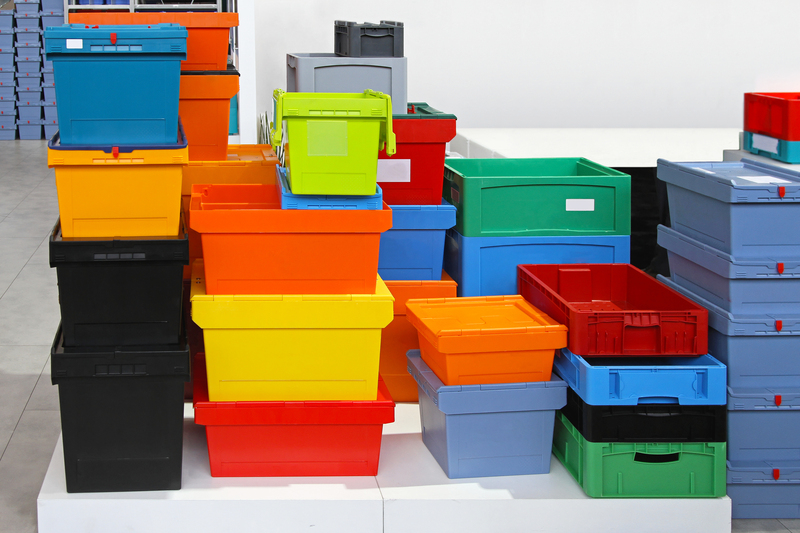The Ultimate Checklist for Storing a Freezer When Not in Use
Properly storing your freezer when it's not in use is crucial for maintaining performance, preventing mold, and ensuring its longevity. Whether you're moving, remodeling, or simply taking your appliance offline temporarily, following a thorough checklist not only preserves your freezer but also saves future time, money, and effort. In this comprehensive guide, you'll find step-by-step instructions, useful tips, and best practices for storing a freezer when not in use.
Why Proper Freezer Storage Matters
Storing a freezer properly is about more than just unplugging and stashing it away. Improper storage can lead to problems such as:
- Mold and mildew growth inside the freezer compartment
- Unpleasant odours that linger even after cleaning
- Rust or corrosion on the appliance exterior or interior parts
- Wasted energy and higher maintenance costs
- Shortened appliance lifespan due to neglected care
To avoid these issues, follow our ultimate freezer storage checklist for safeguarding your valuable appliance during periods of disuse.

Initial Preparation: What to Do Before Storing Your Freezer
1. Completely Empty the Freezer
The first and most important step in preparing a freezer for storage is to remove all contents. Check every basket, shelf, and drawer. Leaving even a small item behind can cause odor or attract pests.
2. Switch Off and Unplug Safely
- Turn off the freezer using the control panel or dial.
- Unplug the appliance from the wall socket.
- For built-in freezers, switch off the circuit breaker if necessary.
Unplugging protects both your appliance and your home from electrical hazards.
3. Defrost the Freezer
- Open the door and allow all ice to melt naturally.
- Place towels around the base to absorb water runoff.
- Use a plastic spatula to carefully dislodge stubborn ice.
- Dispose of wastewater safely.
Tip: Don't use sharp objects to speed up the process--this can damage the unit's interior walls.
Deep Cleaning Before Storing a Freezer
1. Remove Shelves, Drawers, and Trays
- Take out all removable components.
- Wash them with warm water and mild dish soap.
- Allow each part to air dry fully before reassembly.
2. Clean the Interior Thoroughly
- Wipe down all surfaces with a mix of baking soda and warm water (1 tablespoon baking soda per quart of water).
- Focus on corners and door seals where grime hides.
- Dry completely to inhibit mold and mildew growth.
3. Deodorize the Freezer
- Place a bowl of baking soda or activated charcoal inside to absorb lingering smells.
- For severe odors, wipe surfaces with a vinegar solution (1 part vinegar, 3 parts water), then air dry.
Inspecting And Preparing the Exterior
1. Clean the Exterior Surfaces
- Wipe the outside with a damp cloth and mild detergent.
- Dry thoroughly, ensuring no water seeps into electrical components.
2. Inspect for Damage or Wear
- Check the power cord and plug for fraying or cracks.
- Inspect hinges, gaskets, and seals for wear or damage.
- Replace or repair worn parts before storing your appliance.
3. Protect Against Rust and Corrosion
- For metal-freezers, apply a thin coat of appliance wax for protection.
- Ensure all parts are completely dry before moving to storage.
Choosing the Best Location for Freezer Storage
Location is critical when storing a freezer that's not in use.
- Keep it upright. Storing your freezer upright is preferable. If moving is required, always let it stand upright for at least 24 hours before reconnecting.
- Avoid damp or humid areas. Basements and garages often harbor moisture, increasing the risk of rust or mold.
- Ensure good ventilation. Leave at least 2-3 inches of space around the freezer for air circulation.
- Avoid direct sunlight or heat sources. This can damage plastic and electronic components.
- Elevate from floor level. Use pallets or blocks to keep the freezer above ground in case of flooding.
Preventing Mold, Mildew, and Pests When Freezer is Not in Use
1. Leave the Door Slightly Ajar
- Use a spacer or wedge to keep the door slightly open, which prevents stale air and moisture buildup.
- You can use a towel, door stop, or the manufacturer's hold-open feature.
2. Periodic Ventilation and Inspection
- Check the freezer every 1-2 months for signs of pests, mildew, or odors.
- Repeat cleaning and drying steps as needed.
3. Use Natural Deodorizers
- Replace baking soda or charcoal regularly to keep the interior odor-free.
- Scented dryer sheets can also help keep the interior smelling fresh.
Securing and Labeling Your Stored Freezer
- Secure the power cord with twist ties and tape it to the back to prevent tripping or damage.
- Label the appliance with the date of storage and a checklist for quick reminders.
- Inform all household members or movers about the freezer's location and storage condition.
Special Considerations for Storing Chest vs. Upright Freezers
Chest Freezers
- May require extra defrosting time due to ice buildup.
- More prone to trapping moisture, so ensure thorough drying and door spacing.
- Check hinges and lids for tightness and security.
Upright Freezers
- Doors are easier to leave ajar for ventilation.
- Shelves and drawers need careful removal and reinstallation.
- Ensure the appliance is not prone to tipping during storage.
Transport Tips: Moving and Storing Freezers Offsite
- Secure doors with rope or bungee cords, but don't seal airtight.
- Protect corners and edges with cardboard or moving blankets.
- Keep upright during transport to avoid oil leaks in compressors.
- Let the freezer settle for at least 24 hours before plugging in, if transported on its side.
Note: Consult your user manual for model-specific instructions when moving or transporting your appliance.
Reactivating a Freezer After Storage: What To Do
- Remove all spacers and natural deodorizers from inside the appliance.
- Check for pests, mold, or damage inside and out before plugging in.
- Plug in and allow to cool for several hours before restocking with food.
- Check door seals and gaskets to ensure optimal air-tightness.
Bonus Tips For Maximizing Freezer Lifespan in Storage
- Consult the manufacturer's guide for model-specific freezer storage advice.
- Take photos of your cleaning process for reference and maintenance records.
- Keep user manuals and warranty documents in a nearby, safe place for easy access.
- Consider running the freezer empty for a few hours after storage to air it out before adding new items.

Frequently Asked Questions About Freezer Storage
1. How long can you store a freezer without using it?
If stored in the right conditions, a freezer can remain unused for several months to a year, especially if you follow this checklist. Regularly inspect the appliance for any signs of problems.
2. Can you store a freezer outside?
It is generally not recommended to store a freezer outdoors due to fluctuating temperatures, humidity, and exposure to pests. If you must, use weather-resistant covers and check on the appliance frequently.
3. Should you leave a freezer door open or closed when storing?
Always leave the door slightly open with a spacer. This prevents mold growth and odors from developing inside the sealed environment.
4. What can I use to prevent odors in a stored freezer?
Natural deodorizers like baking soda, activated charcoal, or even coffee grounds work well. Avoid using chemicals or air fresheners that may linger and affect food later.
Conclusion: The Right Way to Store Your Freezer When Not in Use
Following the ultimate freezer storage checklist ensures your appliance remains clean, safe, and ready for future use. By properly prepping, cleaning, ventilating, and periodically checking on your freezer, you can avoid common pitfalls like mold, mildew, and mechanical problems. Whether you have a chest freezer or upright freezer, a well-maintained storage routine saves money, time, and guarantees peace of mind.
For optimal freezer preservation during periods of non-use or storage, bookmark this page and share with family or friends who may benefit. Your future self--and your frozen food--will thank you!



